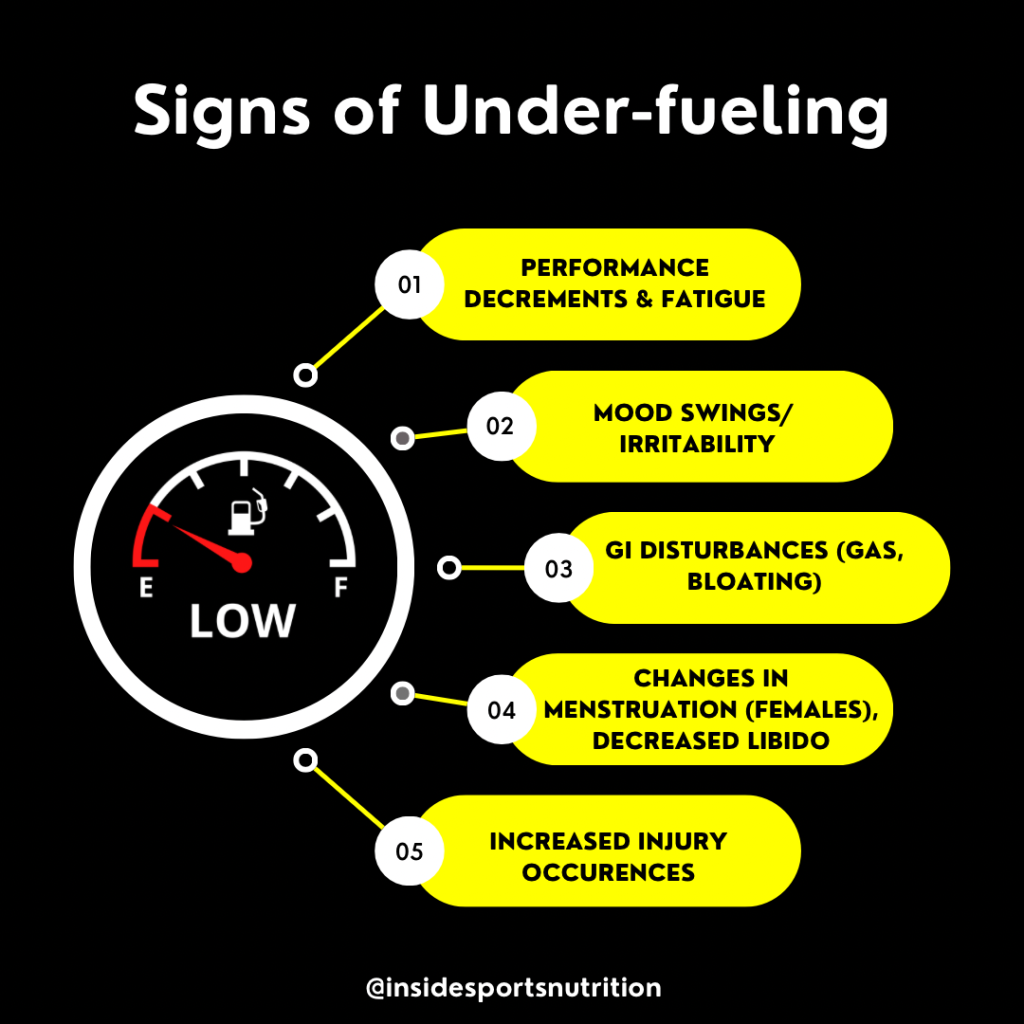In a recent study surveying almost 2000 runners, we found that just over 50% of recreational runners were at risk for low energy availability (LEA). Energy Availability (EA) represents the energy (kcal) left over after accounting for exercise to support normal physiological functions. EA is calculated as “energy intake minus exercise energy expenditure” adjusted for fat free mass. Optimal energy availability is necessary for maintaining health as well as optimizing training adaptations and performance.
LEA can arise due to underfueling, or when energy intake is insufficient relative to the energy expended during exercise. While underfueling can be a result of disordered eating, it is also often unintentional due to a lack of knowledge about fueling needs. EA of at least 45 kcal/kg FFM-day for women and 40 kcal/kg FFM-day for men appears necessary for most days; and, even ~5 days of LEA <30 kcal/kg FFM/ day may have negative metabolic and endocrine effects. Chronic LEA can also lead to a syndrome known as RED-S which includes a broader spectrum of long term health, physiological and performance consequences in both females and males.
Unfortunately, EA is not easy to measure as it is very difficult to get accurate measures of energy intake and exercise energy expenditure. Therefore, it’s helpful to recognize some warning signs of underfueling:
Fatigue (during and outside of exercise): Frequently feeling significant fatigue during training sessions, even after acquiring enough rest, can be a sign that you aren’t giving your body the energy it needs. Underfueling can impair recovery from training and ultimately result in performance decrements and inability to adapt to the training stimulus.
Delayed recovery: Inadequate energy intake can delay muscle glycogen replacement and repair of muscle tissue, thus hindering training adaptations necessary for performance improvements.
Mood Swings/Irritability: Adequate energy availability is important for both physical health and mental health. Irritability (hangry), decreased motivation, and difficulty concentrating during and outside of training are signs of underfueling.
Increased occurrence of injury or illness: Inadequate energy availability can lead to decreased immunity which increases your susceptibility to illness. A recent study examined elite endurance runners with normal menstrual cycles and those with menstrual dysfunction. Runners with menstrual dysfunction had significantly more injury days and ran less than the normal cycle group. Only the athletes with normal cycles increased their performance over the year-long period.
Changes in menstruation (females) and decreased libido: A recent study found that during a period of overreaching in female athletes with a normal cycle, athletes who increased ad lib energy intake (maintaining energy availability) adapted to the increased training volume. However, athletes who failed to increase energy intake had poor performance outcomes and suppressed ovarian function. Another study found that amenorrheic athletes had slower reaction times, lower strength indices, and lower endurance performance in comparison to athletes with a normal menstrual cycle.
Other signs of underfueling include: GI disturbances (gas, bloating, decreased bowel movements), and sleep disturbances. Of course these can also be related to issues beyond LEA, but it’s something to consider especially if you experience any other symptoms listed above.
TAKEAWAY: During times of increased training, athletes need to eat more in order to support their metabolic and endocrine systems, to adapt to the training stimulus, and to optimize performance. This may require additional work to ingest adequate energy around and during training, especially when appetite does not match the energy needed.
PMID: 33690163; 28723842; 33651630; 33651630; 24620037, 2446391; 30632422

Leave a comment